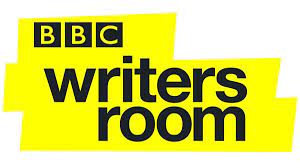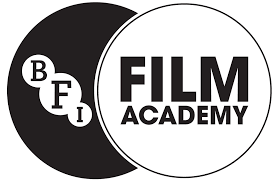Hi There,
I’m very pleased to announce that in September I will be running a 5 day SCREENWRITING COURSE / RETREAT in a beautiful, rural part of South Western France, near Limoges. All the details are on my website. This does feel like a slightly counter-intuitive time to be announcing a new venture abroad (!) but there is a clear cancellation policy, which I hope covers all the bases. It will be a great opportunity to get a lot of writing done in a beautiful setting with 9 other writers to share your experiences and me there to run a one hour session on different aspects of screenwriting at the start of each day and to be on hand throughout the week to give you all the help you might need with the project you’re working on in a completely unpressured environment.
There’s quite a lot of information here to take on board – so please email me if you have any further questions about this writing retreat.
———————————
ONE PAGE PITCHES
I have included two of the pitches I received with specific feedback; and then some general conclusions in response to all of the very many (50+) one page pitches you sent in – thank you so much and I’m sorry I can’t share specific responses to more but it would take me many weeks of this newsletter to do so! It was a real education for me to read so many one page pitches.
————————————-
duplicity. 4 x 60
Kat’s a police officer; 15 years under her belt. There’s nothing she hasn’t seen…full time job, full on trauma. It all dances in front of her eyes, liquid red. Every. Single. Day. Back home, she’s got three kids under 10; four sometimes, if DAVE’s being a dick. And 88-year-old MAUREEN next door, calling in every day waving her boils and rashes under Kat’s nose. Kat knows she’s a pressure cooker…waiting.
Her partner on the crew, ADAM, keeps her just this side of sane. He’s in charge of the playlist on their way to shouts, his dark humour finding its way into music choices; Ozzy Osbourne’s Blood Bath in Paradise on a loop last week. Kat leans on Adam, he’s the first one she sees after dealing with the stress at home; screaming kids, scratching Maureen, stroppy Dave.
One night, they’re called on a shout to a posh part of town. Blues and twos on, jumping red lights, they screech up the gravel drive to a huge house of glass and steel, all the lights on. Inside, they find terrorised dinner guests and a trashed kitchen but no serious injuries other than a deep head wound to a woman, unrecognisable from the blood streaming in rivers down her face. A fight breaks out between some of the guests, it’s chaos.
When things are calmer, the woman’s gone. Not in the house, the garden, anywhere. Disappeared. The other guests are saying nothing. Kat and Adam are thrown into a full-scale missing persons investigation. A few days later, with the woman still missing, Kat’s called in by her boss. Tricky one this, Kats, he says, the scenes of crime boys picked up blood samples from the kitchen. From the woman with the head wound. All of us coppers are on the DNA database so we can be eliminated from enquiries, you know that. But this is the weird bit – the woman’s a full DNA match to you. You weren’t injured, it’s her blood. Didn’t know you had an identical twin. No, says Kat, neither did I.
Finding the missing woman consumes Kat, who discovers the twins were separated at birth, brought up by different families in different parts of town. Forced to live on her wits and her ability to manipulate men, Kat’s twin Rebekah was sucked into a dark underworld of criminality and she’s at the dinner party as a high-class sex worker infiltrating the house to uncover evidence of a conspiracy to traffic children by her boss and the homeowner, Jake. In her search for the truth, Kat unearths dark secrets about her past which threaten to ruin her future. Kat has to decide if she can help Rebekah or if she has to walk away to save both of them.
Rachel Evans
@ January 2020
—————————————-
I very much enjoyed this. So why did this work for me? Quite simply, I think it’s a cracking story idea which is very well-written. There’s a clarity, economy and confidence to the writing. The style of the writing conveys the tone – there’s a strong vein of humour (‘back home, she’s got three kids under 10; four sometimes, if Dave’s being a dick.’) running through what is otherwise quite a hard-hitting dramatic storyline; and for me this vein of humour and humanity elevates it as a pitch.
I also really like the fact that it has the confidence to not even fill a full page (this is in fact about ¾ of a page in 12 point).
It’s clearly laid out with a lot of gaps within the text – a lot of white on the page.
Although this pitch isn’t specific about place (and generally I think the better pitches ARE specific about location and character), this does nonetheless feel rooted in a recognisable, relatable reality – Kat’s frustrations with her family, her bond with fellow office Adam. There are some engaging, telling specifics – eg Ozzy Osbourne’s Blood Bath In Paradise which, even if you don’t know the song, brings (again) a sense of humour and humanity to the characters and story.
It’s impossible in a document of this length to answer all the narrative questions you set up – but this pitch does a nice job of introducing the narrative hooks and questions that the series will pursue – and piquing this reader’s interest.
The structure of the document works well – the writer sets up the characters and setting before hitting us with an attention-grabbing, clever, high-concept plot twist. I was intrigued by this plot twist because I was already invested in the lead character.
Normally, I’m all for starting your one page pitch with an introduction that includes aspects like – genre, logline, the uniqueness of your idea in one or two sentences, your agenda as a writer for writing this story (what you as a writer bring to this story that make this utterly distinctive and compelling) BEFORE getting into any detail of the plot. DUPLCITY doesn’t do this – it’s straight into plot but works nevertheless because of the clarity of the characters and story proposition.
It tells us – title, format (4 x 60’), writer’s name, contact details (which I removed).
—————————————–
OTHER THOUGHTS / CONCLUSIONS
SO – here are a few conclusions / thoughts that I came to after reading the 50 or so outlines submitted.
Always a good idea to send your documents as PDF’s.
Include title, writer’s name and contact details – SO MANY didn’t!
Font size – no smaller than 12 point. This isn’t an exercise to see how much text you can cram into one page BUT one page pitch means ONE PAGE – stick to the brief (a few of those submitted ran into a 2nd page). There were a few documents that were written in fonts smaller than 12point and had massively long paragraphs – it’s not a good idea to demoralise the reader before they have even started reading. Your one page pitches need to look uncluttered and have plenty of white spaces.
Layout / paragraphs / formatting – as above, print your page off and think about how it looks. Is it welcoming, well laid-out and professional-looking?
As someone who reads A LOT of non-script documents, I also have strong views about FONTS. Without going over the top with a font that is absurdly showy – make sure that your font is clear and interesting to look at. 12 point Calibri, for instance, just looks a bit….boring. (I realise this is highly subjective! But think about what font you use to make the script as engaging and easy to read as possible).
I can’t over-emphasise the importance of CLARITY in the writing. In particular, narrative clarity – making it easy for the reader to understand the story. There were quite a few that may have been good stories – but if I’m struggling to make sense of the story half a page in, my attention wanders. Also clarity and fluency of writing. Too many of the pitches included sentences that my brain tripped over – sentences that felt awkward and lacked fluency.
References to other shows can be very useful if they feel specific and illustrative. I’m working on a project at the moment on the C4 course which the writer has described as ‘Fargo meets Local Hero meets Happy Valley’ which really helps me visualise what he’s trying to achieve. Sometimes though, these sorts of references become a bit of a hostage to fortune. If you’re referencing a brilliant show, there has to be an equivalent touch of brilliance and originality in your pitch.
Don’t get bogged down in extended chronology of plot – a pitch is about the essence of the idea; it shouldn’t be a detailed synopsis. And don’t get booged down in explaining the rules of your story world.
Work tirelessly to make sure your logline is absolutely gripping and distinctive.
But character is even more important than plot. Why should we care about the character at the centre of your story? What is the human / emotional connection between your characters and the audience?
You need to make us understand WHY you want to tell the story you’re pitching.
Be specific not general. Be visual rather than conceptual.
Visual details / specifics. So often, what you remember / take away from the best 1 page pitches – is a telling, memorable visual image – that expresses the lead character or story. (Actually these visual specifics is one element that isn’t so evident in DUPLICITY – although details like ‘they screech up the gravel drive…’ to denote the posher part of town are great).
Avoid empty promises. Don’t tell me, ‘This is going to be a side-splitting comedy…with the narrative tension of Jaws,’ – instead give me the specifics that illustrate this. ie If you’re pitching a comedy, the one page pitch needs to be funny – don’t just tell us the script is going to be funny. And similarly drama pitches need to be inherently dramatic.
It’s great to get a sense of the writer’s conviction and passion for the story they’re telling, their emotional investment in their own characters and story. In DUPLICITY I get the writer’s emotional investment in lead character Kat from the first paragraph.
I would suggest as a general rule that you don’t write separate character biography lists within a one page pitch (quite a few did this.) You shouldn’t have room to do this – instead the tone and context of your story should do the job of introducing and illuminating your characters (as the first paragraph of DUPLICITY does). Reading lists of characters with one or two sentences biogs is often information overload; it’s hard to then see how all of these characters will fit into the story; so these biogs are often hard to read.
—————————————-
Here is a 2nd one pitch (for a short film) that worked for me –
After a Breakup, an App to Help Breathe, Then Run – OLIVIA GAGAN
“When was the last time you breathed properly?” the therapist asked me.
His name was Allan. Thirty minutes into my first visit, I was still waiting for him to reach the part where he would help me get over the end of my relationship.
“I’m not sure what you mean,” I said.
“Easy, open breathing. Big lungfuls of air.”
“I don’t know,” I said. “I breathe all the time.” I tried steering the conversation to myself. “I just think I need to work out what happened – ”
“I’m not interested in what happened,” he said. “I’m interested in the last time you breathed normally. You’re a young, healthy woman. But your paperwork tells me you’re struggling at work, haven’t eaten a full meal in weeks and can’t sleep. You need to fix that.”
How do you cure heartbreak?
This is a true story, about my own experience getting over my first major relationship. I originally wrote it as a newspaper article for The New York Times’ Modern Love section, and it was published in December 2016. I’d like the challenge of re-writing an existing story in a short film medium.
I turned up at a counsellor’s office, chest-deep in sadness, hoping an expert would teach me how to get over my heartbreak. Or, even better, how to get my ex back. But I wasn’t allowed to talk about understanding a lost love at all. Instead, Allan asked me to download an app which would teach me how to breathe properly.
I thought this was a waste of precious therapy time. He insisted being able to breathe is important.
Over a series of weeks, however, I used the app. Learning to breathe mainly made me a) frustrated b) cry a lot in public places and c) pick arguments with Allan.
Then a miracle happened – my ex came back. On a freezing cold night on Regent Street, he told me that he missed me, that he wanted us to start all over again. But a curious thing happened over the weeks I was learning to breathe: I started getting new voices in my head. Bolder ones. Including one that told me to run as fast as I could from him. So I did.
This is an anti-love story. In the end, the girl does not get the guy. She doesn’t even learn how to cure a broken heart. But she does learn to breathe – and to choose herself over somebody else. It is a story featuring very modern methods of searching for happiness – apps, therapy, mindfulness – but ultimately, it’s about something we have always struggled with: learning to live with yourself.’
———————————–
This is a very particular, largely autobiographical story pitch. It reads like a story that is utterly specific to this writer. I’m engaged by its conviction, passion and the sense that it has something important to say but within a recognisable narrative structure – ‘This is an anti-love story.’ I’m pulled into the story but also persuaded that there is a really strong synergy between writer and subject matter – this writer is the best writer to tell this particular story.
It’s well laid out and formatted. The short paragraphs and use of italics and bold text help make this a clear, easy read.
There is a clear narrative shape to it. I particularly liked the way the story moves (surprisingly but inevitably) towards the girl’s encounter with her ex. There is a clear emotional character journey over the course of the film.
Quite simply, the quality and clarity of the writing of this pitch (and the linked newspaper article) stand out in their excellence.
———————————————-
The next newsletter will be on Friday March 20th.
All the best
Phil
PHILIP SHELLEY
@Philip Shelley1
March 6th 2020






















